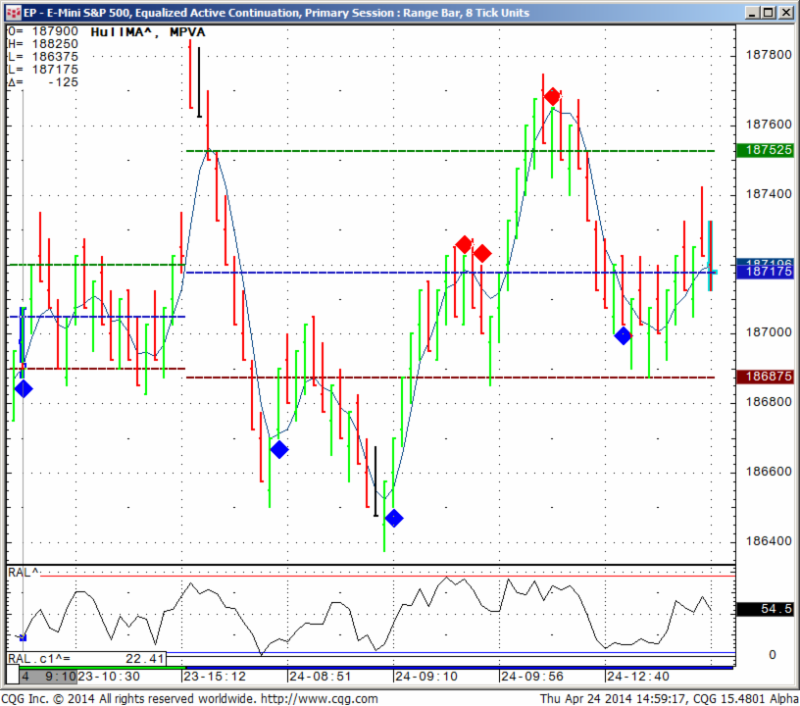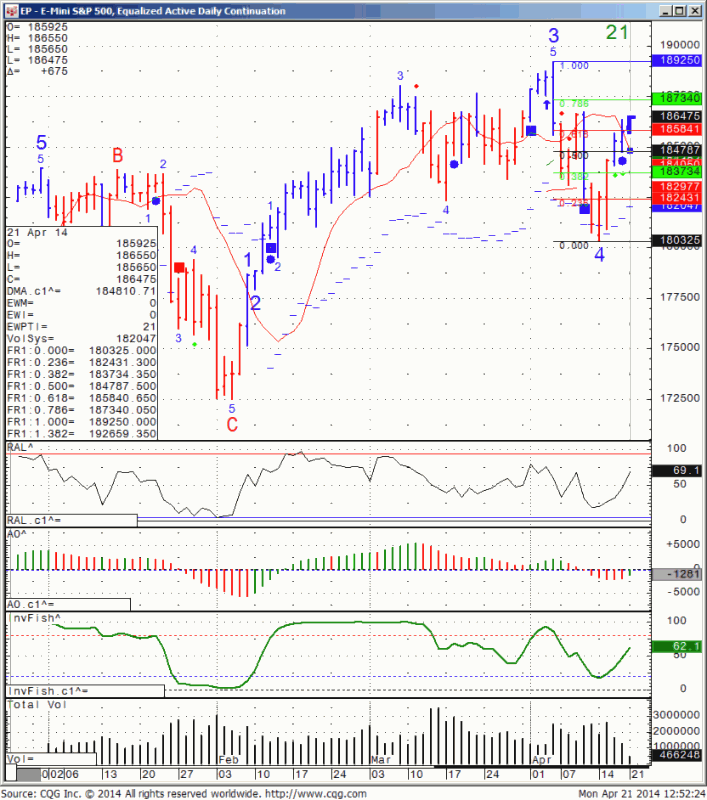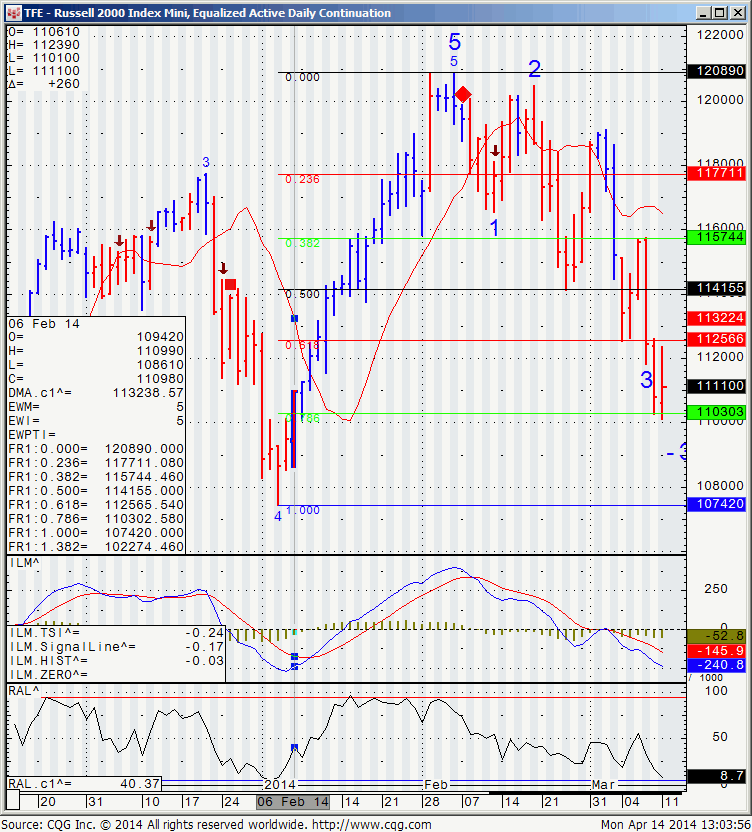Connect with Us! Use Our Futures Trading Levels and Economic Reports RSS Feed.
![]()
![]()
![]()
![]()
![]()
![]()
1. Market Commentary
2. Futures Support and Resistance Levels – S&P, Nasdaq, Dow Jones, Russell 2000, Dollar Index
3. Commodities Support and Resistance Levels – Gold, Euro, Crude Oil, T-Bonds
4. Commodities Support and Resistance Levels – Corn, Wheat, Beans, Silver
5. Futures Economic Reports for Tuesday July 1, 2014
Hello Traders,
For 2014 I would like to wish all of you discipline and patience in your trading!
Wishing everyone great trading month in July!
TradeTheNews.com Weekly Market Update: Summer Doldrums Arrive Early
– The second quarter still has one session left to go on Monday, however there was very little quarter-end repositioning driving trading volumes or volatility any higher this week. The final reading of first quarter US GDP came in much lower at -2.9%, however markets ignored this well-trodden story to concentrate on more recent, more positive numbers: the May Markit manufacturing PMI reading pushed out to 61, its highest level since May 2010; May new home sales surged 18.6% from April to an adjusted rate of 504K, the highest level since 2008; and May core PCE at 1.5%. Similarly positive data were seen out of China and Japan, while European indicators held steady at a low level of growth and inflation. The S&P500 made an all-time intraday high on Tuesday and then edged lower, while European bourses moved lower all week. For the week, the DJIA dropped 0.6%, the S&P500 fell 0.1% and the Nasdaq gained 0.7.
– The annualized May core PCE, the Fed’s preferred measure of inflation, grew 1.5%, right in line with consensus expectations. This is the highest rate of growth in the measure since February 2013, and the overall reaction to the data among analysts and the Fed was very measured this week. The headline PCE was a bit higher, at 1.8%. Fed dove Bullard said PCE inflation would not get above 2% until 2015 but warned that the Fed is much closer to achieving its goals and the economy is doing much better than most people realize. While Bullard also reiterated his view that rate hikes would not be appropriate until the first quarter of 2015, Bullard’s firm tone helped force equity markets lower on Thursday morning. Fed hawk Lacker said the recent inflation data was not just “noise” and that inflation measures would head higher this year. Lacker also warned it would be a mistake to allow inflation to get out of control before the Fed started raising rates. Recall that last week, Fed Chair Yellen said “…recent readings on, for example, the CPI index have been a bit on the high side, but I think the data we’re seeing is noisy.”
– The final revision of the weather-impacted US first quarter GDP missed expectations and sank much lower, to -2.9% from the -1.0% preliminary figure. This was the fastest rate of decline since the Great Recession and the largest drop recorded since the end of World War II that wasn’t part of an official recession. However, nearly every component of the final reading was very modestly adjusted with the exception of imports and exports (which more or less cancelled each other out), and the services PCE, which was revised to +1.5% from +4.3% in the preliminary data, driven entirely by updated estimates of health care spending. The feds had assumed medical services would be up sharply due to expanded access under the ACA, but the latest quarterly services survey showed few signs of acceleration. After the data, Barclays adjusted its call to +2.9% from +4% in its prior view, to reflect a more modest rebound in Q2 consumption growth. TD Ameritrade cut its Q2 GDP view to +3.0% from +3.6% prior.
– Oil prices spiked higher on Tuesday on reports the Obama administration had cleared the way for the first exports of US crude oil in 40 years. Federal officials informed two energy firms – Pioneer Natural Resources and Enterprise Products Partners – they can legally export ultra-light oil condensate, which is a product of shale drilling. The front-month WTI crude contract traded as high as $107.50 before the Commerce Department clarified that there had been no broad change in policy. Commerce said that the two companies were granted permission to export shale condensate only after it had been run through a distillation tower to become a petroleum product and only because of a large oversupply of condensate, clarifying that the move had no larger implications for crude exports. Nevertheless, refiners tanked on Wednesday, with Valero down 10% or so on the week.
– On Friday Ukraine signed the historic free-trade agreement with the European Union that has been at the heart of months of violence and upheaval in the country, drawing an immediate threat of “grave consequences” from Russia. Ukraine President Poroshenko declared a unilateral ceasefire for the week, however hostilities continued, with both sides exchanging fire on several occasions. The tentative ceasefire is expected to extend through Monday to allow of an attempt at peace talks. Western powers reiterated they stand ready to impose more sanctions if Russia fails to make a good faith effort de-escalate the tensions and return full control of Ukraine’s border to the Kiev government.
– The US Supreme Court ruled against Barry Diller’s Aereo streaming television service, calling it a broad violation of broadcaster copyrights. The sweeping and definitive ruling was split 6 to 3, and the majority opinion went out of its way to call out Aereo as the equivalent of a cable company, not merely an equipment provider. They also emphasized that the ruling does not endanger other technologies, including cloud computing technology. Mr. Diller said the ruling was the end of the road for Aereo, calling the ruling a big loss for consumers.
– In earnings, shares of Nike gained ground on impressive fourth quarter numbers, beating on the top and bottom line. Futures orders were up 11%, while even China – previously a soft spot – appears to have made a fully recovery from its inventory adjustment with a 4% rise in sales. Walgreen missed bottom-line expectations in its third quarter, but bevenue was up 6% y/y and met consensus views while Rx comps were up 6.3%. Walgreen also said it was considering reincorporating in Switzerland for tax reasons as part of its combination with Alliance Boots. Monsanto beat earnings expectations in its third quarter results and authorized a big new share buyback program. Note that earnings were down 5% y/y and revenue missed expectations, dragged lower by a 16% y/y decline in sales of genetically-engineered corn seeds. Homebuilders Lennar and KB Homes reported very strong quarterly results, with robust gains in new home sales and strong growth in backlogs.
– In M&A news, France’s Alstom accepted General Electric’s $13.5 billion offer to acquire the firm’s power generation and grid businesses, with the additional caveat that GE enter three JVs with Alstom for grid infrastructure, renewable power equipment and nuclear power. The deal comes after the French government got an option to buy as much as 20% of Alstom from Bouygues following the closing of the deal, giving the government the guarantee it needed that Alstom will remain a French firm. Oracle reached a deal to acquire Micros Systems for $68/share in cash, in a total deal valued at $5.3B. This is the company’s biggest buy since acquiring Sun Microsystems for $7.4 billion back in 2009. Midwest utilities Wisconsin Energy and Integrys Energy entered an all-stock merger valued at $9.1 billion.
– FX markets remained locked in tight ranges for yet another week as volatility declined even further. Analysts noted as long as US bond yields were in retreat and the US yield curve continued its bullish steepening, the greenback should stay offered, pushing volatility even lower and keeping the carry trade in play. Volatility in the EUR/USD pair matched all-time lows at 4.55%. GBP/USD saw a little profit-taking after failing to close above the pivotal 1.7050 weekly chart point. USD/JPY slid lower, dropping below its 200-day moving average to end the week around 101.34 largely due to US rates. Key support is at 100.70 and could ignite downside momentum if broken.
– China HSBC flash manufacturing PMI for June returned to expansionary territory for the first time in six months, signaling the “targeted mini-stimulus” measures orchestrated by policymakers are starting to gain some traction. The data showed an upward inflection in input prices and improvement in the employment component, although growth in new export orders slowed. HSBC chief China economist said he expects continued accommodative policy until the recovery is sustained. China Beige Book assessment of Q2 was more measured, indicating fewer companies had access to credit amid weakening investment environment. Shanghai Composite ended the week up 0.5%.
– Trading in Tokyo was decidedly more bearish as Nikkei225 fell 1.7%, weighed down by firmer Yen and even more fodder for the BOJ to stick to its guns on policy. May unemployment rate fell to a 17-year low of 3.5%, while job-to-applicant ratio hit a 22-year high of 1.09x. Inflation figures also maintained their upward trend, with core Japan-wide CPI reaching its highest point since 1982. Japan PM Abe formally unveiled his “3rd arrow” plans early in the week, announcing plans to cut the corporate tax rate from current 35%+ to below 30% over the next few years, enact portfolio management reforms for pension funds, and revise the tax system with intent on promoting the number of women in the workforce.
If you like the information we share? We would appreciate your positive reviews on our new yelp!! Continue reading “Futures Market update and Economic Reports 7.01.2014”



